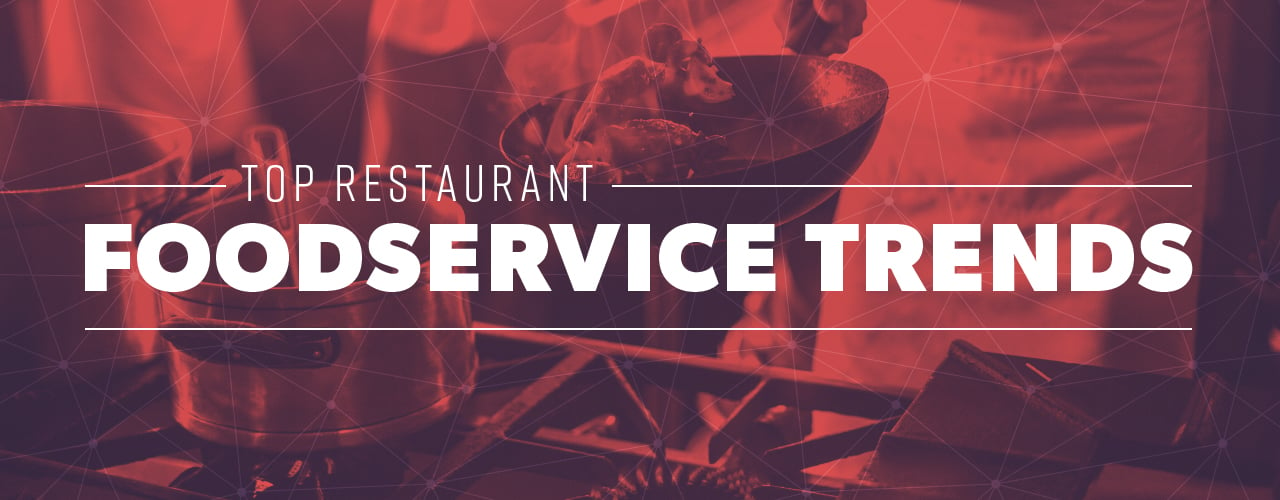Being a foodservice operator is a lot like competing in a cooking challenge; you start with the service-style, cooking techniques, and presentations that are authentic to your brand, and then each year you're given "surprise ingredients" (aka foodservice trends), and you must learn to incorporate them. Adopting and adapting to trends in flavor, technology, and consumer preferences is how you win the game. Check out the top foodservice industry trends shaping 2026 so you can attract customers, retain staff, and upgrade systems.
Food Trends
If 2026 food trends were a cast, protein would be the star, and healthy fats, low-lactose cheeses, and the Mediterranean diet would play the supporting roles. Consumers are equally concerned with the quality of their food as sustenance as they are with its flavor. Consider adding and dropping ingredients based on these consumer preferences.
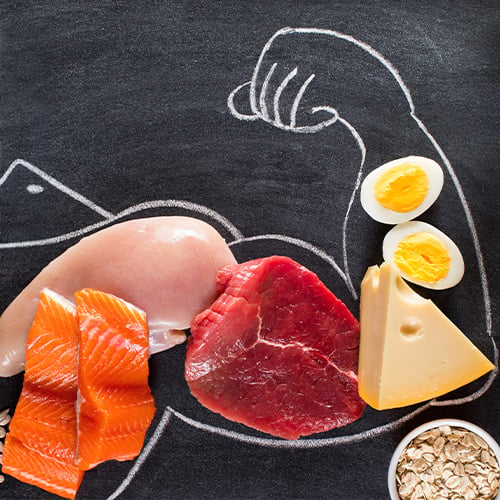
Protein Obsession
According to a recent Toast survey, a significant 43% of diners expressed a desire for more high-protein meals in their dining experiences. This growing preference has prompted food establishments to explore innovative ways to incorporate protein beyond the traditional meat portion of the plate through side and topping swaps. For example, chefs may swap rice for lentil varieties or replace croutons with protein-packed cheese crisps. These simple yet effective changes not only cater to the protein-focused consumer but also add a unique twist to familiar dishes. Bakeries are also getting in on the action by baking with protein powder, creating a new category of baked goods that cater to health-conscious consumers, and smoothie bowl businesses are now offering granolas that include protein crisps and bases that feature Greek yogurt, providing a wholesome and satisfying morning meal that keeps customers fueled throughout the day.
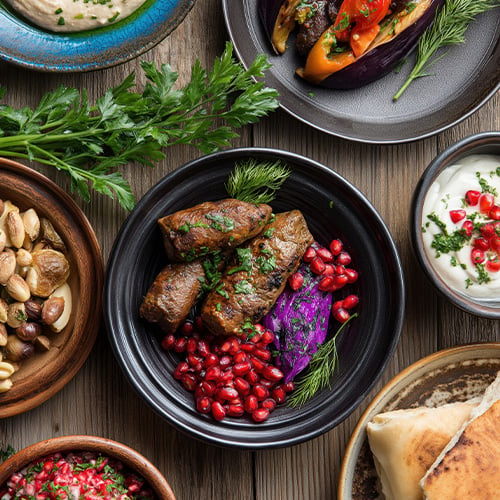
Mediterranean and Middle Eastern Flavors
The rise of health-conscious eating habits and globally inspired flavors has driven the popularity of the Mediterranean diet and the flavors of its neighboring Middle East. The Mediterranean diet, with its emphasis on fresh ingredients, lean proteins, and heart-healthy fats, appeals to consumers seeking nutritious and flavorful options. Beyond the familiar staples like hummus and Greek salad, there is a growing interest in exploring lesser-known culinary traditions from specific regions such as Calabria, Crete, or coastal Morocco. Discover the bold and irresistible flavors of North African cuisine, including the fiery harissa and the aromatic ras el hanout spice blend. Lebanese toum (a velvety garlic sauce) and baba ghanoush (smoky eggplant dip) are some examples of the rich and diverse flavors that Mediterranean cuisine has to offer.

Seed Oils and Alternative Fats
Seed oils have long been a staple in commercial kitchens due to their affordability and versatility. However, many consumers are moving away from seed oils due to concerns over their health implications and processing methods. As a result, chefs and foodservice operators are now exploring alternative fats to meet the changing demands of their customers. One popular alternative fat gaining traction in the culinary world is beef tallow. Beef tallow is a rendered form of beef fat that is rich in flavor and offers a high smoke point, making it ideal for frying and sauteing. Derived from coconut oil, MCT (medium-chain triglycerides) oil is praised for its rapid energy-boosting effects and potential advantages for weight management, and many chefs are now integrating MCT oil into their recipes to introduce a nutritious fat source. Avocado oil and coconut oil continue to be favored choices for their versatility and nutritional profiles.

Goat Cheese and Low Lactose
Prized for its unique tangy flavor, creamy texture, and numerous health benefits, the market value of goat cheese is climbing and projected to exceed $14 billion by 2029. One of the key factors driving the popularity of goat cheese is its lower lactose content compared to cow's milk cheese. It’s considered a favorable option for those with lactose intolerance or difficulty digesting lactose. Additionally, goat milk, the primary ingredient in goat cheese, is recognized for its nutritional value, containing essential vitamins and minerals believed to contribute to overall well-being. The demand for premium and specialty foods has further propelled the popularity of goat cheese as consumers are increasingly seeking unique and high-quality products. This trend has led to the emergence of various goat cheese varieties beyond the traditional chevre, such as goat gouda, blue goat cheese, and goat cheddar, catering to a diverse range of tastes and preferences.
Industry Trends
Since 2020, the foodservice industry has proved its resilience, and 2026 comes with its fresh set of opportunities and challenges for us to rise and meet. Tariffs are pushing the industry towards domestically produced products, along with innovations. Changing customer dining hours and preferences have all-day menus back on the table. Staffing shortages have managers examining the restaurant workplace culture and creating mental health reforms. While T-shirts and stickers were once only relevant to beachside restaurants in tourist locations, merchandising lines are now integral elements of most foodservice brand identities.

Domestically Produced Charcuterie Meats and Cheeses
Domestically produced charcuterie meats and cheese have been gaining popularity in the US foodservice industry, especially in response to tariffs that have created market volatility for imported products. By focusing on domestically sourced products, businesses can ensure a more stable supply chain and better control over costs. Another advantage of domestic and small-batch-produced charcuterie meats and cheese is the opportunity for innovation. Butcher shops have been experimenting with unique cured meat creations such as duck prosciutto, blue cheese-brined salami, and lamb salami. Cheese makers are experimenting with twists on classic stinky cheeses for new, funky flavors. Utilizing locally sourced ingredients and regional cooking techniques is a unique way to take something old and make it new. For example, chefs can use regional BBQ rubs and smoking methods to add a distinctive twist to their charcuterie offerings. This enhances the flavor profile of the products while promoting the culinary heritage of a specific region.
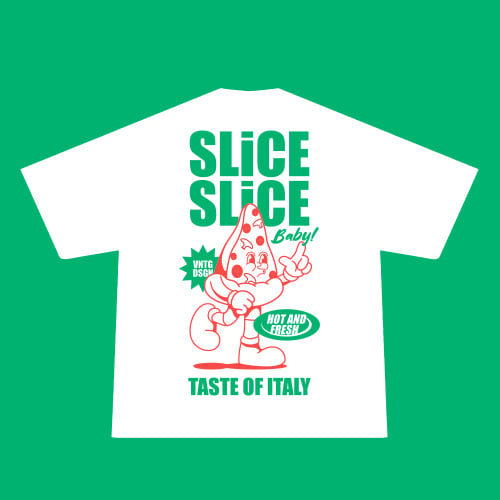
Cult Following Customization
Restaurants aren’t just selling food, they’re developing merchandising lines that rival those of lifestyle brands. While great food and service are still the most important, thriving foodservice businesses must create a brand identity that resonates with customers on a deeper level. Offering swag helps carry your message. Branded merchandise can include everything from hats and T-shirts to stickers and koozies. Breweries and tap rooms can sell branded growlers and pint glasses, and coffee shops can sell branded insulated drinkware, coffee brewers, and teapots. In addition to physical merchandise, another aspect of customized merchandise involves selling signature sauces, spice rubs, and baking mixes in branded packaging. By offering these products for sale, restaurants can extend their brand presence beyond the dining experience and into customers' homes. This both generates additional revenue and reinforces brand loyalty by keeping customers engaged even when they are not dining in the restaurant.
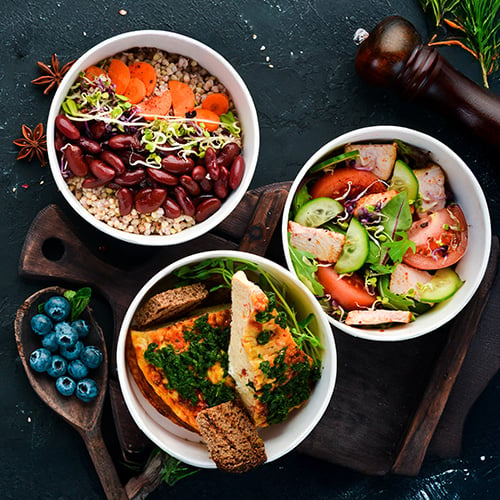
The Return of Lunch
As more people return to the office and resume in-person work, restaurants and foodservice establishments are recognizing the importance of offering flexible dining options throughout the day to accommodate varying schedules and preferences. By providing all-day menus that cater to breakfast, lunch, and dinner crowds, businesses can attract a wider range of customers and capitalize on the demand for convenience and flexibility. The return to office work has also had a profound impact on lunch habits. Desk meals have emerged as a popular choice for busy professionals seeking indulgent yet convenient options that can be enjoyed on their workstations. According to a Tastewise study, there has been a remarkable 64% year-over-year surge in demand for desk meals, reflecting the changing preferences of the workforce. This trend presents significant opportunities for takeout and delivery-friendly menus as well as meal prep businesses to cater to the growing demand for convenient and nutritious lunch options that can be enjoyed on the workplace or on the go.

Restaurant Industry Mental Health Reforms
In the fast-paced world of the foodservice industry, mental health is a growing concern that is gaining more attention. Popular new TV shows have been shedding light on the often-toxic work environments that exist in many restaurants. These accurate, yet bleak portrayals have sparked conversations about the need for better support and resources for restaurant workers who may be struggling with their mental health. Statistics on restaurant worker mental health further emphasize the strains that can come with working in this demanding industry. For example, 60% of chefs in a 2023 Unilever Food Solutions survey reported that their work negatively impacts their mental well-being. Long hours, high stress levels, and intense pressure to perform can all take a toll on the mental well-being of employees. In response to these challenges, restaurant managers and operators are actively working to reform workplace practices and environments to prioritize the mental health of their staff. By creating a supportive work environment, they aim to create an industry that people want to join and can thrive in the long term.
Technology Trends
Foodservice technology innovations are redefining the industry in 2026, bringing exciting advancements and new challenges. As innovations transform operations and customer interactions, security concerns also emerge, highlighting the need for increased cybersecurity. From menu creation to marketing, AI is revolutionizing business operations. Meanwhile, made-to-order bistro vending machines are creating new market segments, and robots are helping meet staffing needs.

AI Integration
According to Popmenu’s 2024 study of 362 U.S. restaurant operators, a significant 79% have either implemented or are considering integrating artificial intelligence (AI) into various aspects of their operations. AI can help with everything from day-to-day tasks like taking orders and food preparation to streamlining business operations and enhancing marketing strategies. Surprisingly, one in four operators expressed a desire to have more margin in their schedule to focus on cooking. By incorporating AI to automate various functions, owners, head chefs, and private chefs can streamline their operations, allowing their to-do lists to shrink and freeing up time to pour into their craft. The benefits of AI integration in the foodservice industry are clear, as highlighted by operators who have embraced this technology. A staggering 90% of foodservice managers and owners reported that AI has not only made their workday easier but has also enhanced the overall guest experience. The impact of AI on profitability is significant, with operators reporting a 65% increase in margins and profitability, a 61% boost in revenue, a 54% reduction in errors, a 53% improvement in the speed of service, and a 49% enhancement in guest experience.

Cybersecurity
According to an IBM report, approximately 80% of restaurant transactions are conducted digitally, which significantly increases the risk associated with sensitive data. Recent breaches at well-known establishments like Golden Corral and Chick-fil-A have underscored the importance of robust cybersecurity measures in protecting customer data. To address these challenges, foodservice companies are investing in various cybersecurity solutions to safeguard their systems and data. One key area of focus is Payment Card Industry Data Security Standard (PCI DSS) compliance, which helps ensure the secure handling of payment card information. Additionally, many businesses are leveraging artificial intelligence (AI) for threat detection, enabling them to identify and respond to potential cyber threats more effectively. Vulnerability scanning proactively identifies and addresses weaknesses in its IT infrastructure before threat actors can exploit them. The global cybersecurity market is expected to continue growing, with projections estimating it to reach USD 351.92 billion by 2030. This growth underscores why the foodservice industry requires ongoing investment in advanced security technologies to protect customer data and maintain trust in digital transactions.

Mr. Roboto
Robotics in the foodservice industry has become a game-changer in recent years, offering efficiency and cost-saving benefits for operators. For example, the Servi Robot has the impressive capability of performing the work of 50 servers while only costing $20 to operate. Miso Robotics' Flippy can reduce setup time by 75%, streamlining kitchen operations and improving overall efficiency. The restaurant service robot market is expected to continue its growth trajectory, with projections indicating a market value of USD 3.86 billion by 2030. This growth is driven by the need for innovative solutions to address the ongoing challenges in staffing and workforce management. According to a Restaurant365 survey, 88% of restaurant leaders are experiencing rising staff expenses. Not only is staffing expensive, but it’s also hard to do; 60% are struggling to fill job positions, and 39% of operators reported missing revenue opportunities as a direct result of a shortage in staff availability. Robotics offers a promising solution to these challenges, providing operators with a cost-effective and efficient way to enhance their operations.
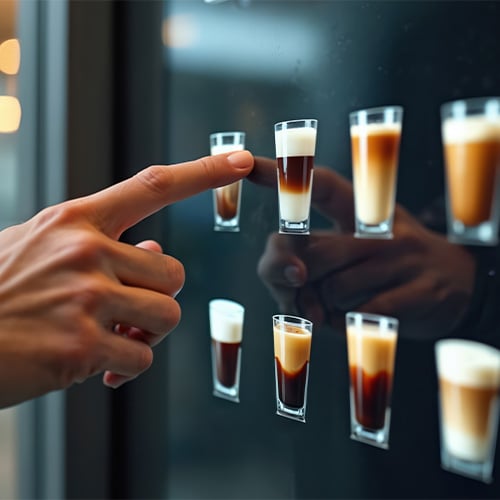
Bistro Vending
Imagine a vending machine that allows you to customize your meal and have it freshly prepared right before your eyes. Bistro-style vending machines make this a reality, offering a range of options such as coffee vending machines that steam lattes to perfection, pizza vending machines that let you choose your toppings and bake it fresh, and boba and froyo vending machines where you can select from a variety of flavors and add your favorite toppings. The applications of gourmet, made-to-order vending are well-suited for malls and retail stores, college campuses, cruise ships, and public pools. Bartender vending machines that allow patrons to choose from a list of staple cocktails and have them mixed and dispensed with the press of a button can enhance hotel lobbies and casinos. Gourmet vending machines also help reduce staffing needs, making them cost-effective solutions. According to an Allied Market Research report, the global vending machine market is projected to grow to $37.2 billion by 2032, at a compound annual growth rate of 7.5%, making 2026 the perfect time to start a vending machine business.
Customer Trends
What customers are craving and how they want to interact with foodservice businesses is ever-evolving. In 2026, patrons are looking for elevated versions of classic comfort foods, giving chefs the challenge and opportunity to reimagine staple dishes into gourmet delights. Prix fixe menus are no longer for the elite; they're being transformed into an attainable luxury. Streaming services aren't the only things people are subscribing to; consumers are subscribing to their favorite restaurants as part of their weekly dining budget. With an increasingly stimulation addicted society, it's no surprise that customers are looking for textural stimulation through their food choices to capture and keep their attention in a world of distraction.
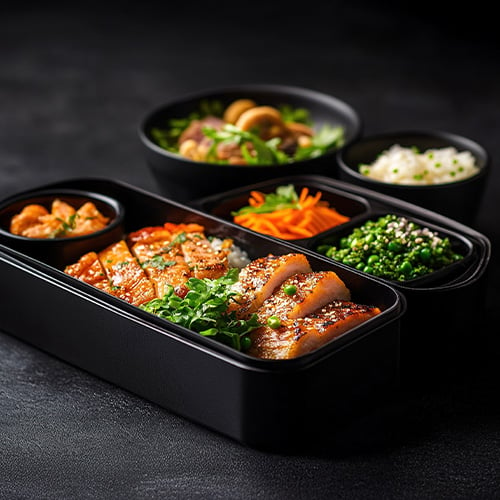
Subscription Dining
According to a National Restaurant Association survey, 81% of Gen Z and 79% of Millennials are interested in joining restaurant subscriptions, and the global food subscription market is projected to grow significantly, with a compound annual growth rate (CAGR) of 9.61%, reaching USD 11.61 billion by 2032. This trend is indicative of a shift in consumer behavior towards seeking convenience, value, and personalized experiences. Restaurant subscriptions operate on a membership model, where customers pay a recurring fee to a restaurant in exchange for a range of benefits such as discounts, free items, or other exclusive offers. Subscription dining not only benefits customers by providing them with convenient and cost-effective dining options but also offers restaurants a unique opportunity to build customer loyalty and drive repeat business. Platforms like MealPal have capitalized on the subscription dining trend by offering a curated selection of local restaurants for subscribers to choose from. By partnering with restaurant subscription platforms, foodservice establishments can attract more customers and expand their reach to a broader audience.

Texture Stimulation
The stimulation-obsessed culture is impacting food preferences and choices; diners are seeking exciting sensory experiences that go beyond taste and create unique mouthfeels. Most popular is the demand for crunchy foods that offer a satisfying snapping sound and toothsome texture. In response to this demand, food innovators are exploring the concept of crunch and melt combinations. For example, Dubai chocolate has gone viral as it combines creamy pistachio butter, melty chocolate, and crispy kataifi, creating a snap, crunch, and melt texture experience. But texture stimulation isn't limited to crunch. Innovative ingredients like buzz button flowers, which create a tingling and numbing effect in the mouth, add a new dimension to the eating or drinking experience. In contrast to these intense sensations, there is also a growing appreciation for airy, lighter textures that provide a bubbly feeling and a calming mouthfeel. Whipped, puffed, or frothed foods appeal to those seeking a delicate and soothing sensory experience. As you develop your menu, put as much care into developing texture as you do flavor to give consumers the stimulation they crave.

Prix Fixe
Once relegated to fine dining and consisting of seven or more courses, mid-range restaurant models are adopting three-course prix fixe menus to offer customers a curated dining experience. A prix fixe menu consists of a set selection of courses, often including an appetizer, entree, and dessert. By offering a structured dining option, restaurants can drive profits by encouraging customers to spend more than they might have with a la carte options. They also provide chefs the opportunity to showcase their creativity and expertise by curating flavor pairings that complement each other throughout the meal. Not only are they becoming more common, but they are also replacing seasonal offerings or menus of daily specials. Instead of developing a variety of standalone items, chefs can exercise their creativity with thoughtful pairings. Rotating prix fixe menus quarterly can attract repeat customers who are eager to try new offerings. This not only enhances the dining experience for customers but also sets the restaurant apart from competitors.
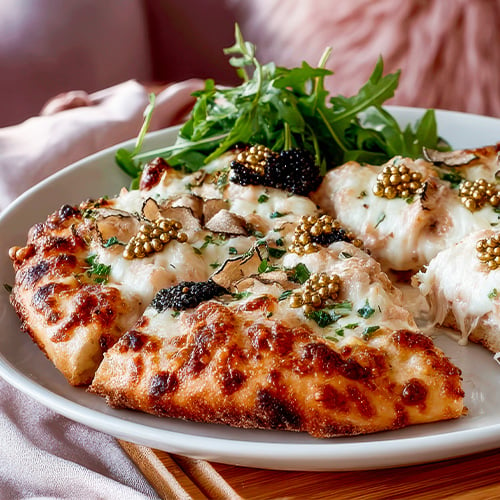
Elevated Basics
Today’s consumers are craving upgraded versions of traditional comfort classics made healthier, infused with bold flavors, or mixed with unexpected ingredients. Million Dollar Bacon, bacon coated in a sweet and savory glaze made with brown sugar, maple syrup, black pepper, and cayenne pepper, exemplifies this trend as it elevates the humble strip of American-style bacon into a gourmet delight. Another innovative take on a familiar favorite is cereal milk kefir. This creative beverage combines the nostalgic flavors of breakfast cereal with the probiotic benefits of kefir, offering a fun and nutritious twist on a childhood favorite. For those seeking a more luxurious experience, chefs are incorporating caviar, a delicacy traditionally reserved for special occasions, into everyday dishes to add a touch of elegance and sophistication. From caviar-topped deviled eggs to caviar-topped pizzas, this trend allows chefs to elevate even the most basic dishes into gourmet creations that cater to the growing demand for premium dining experiences.
How Do Restaurant Trends Benefit Your Business?
Restaurant trends such as AI integration, prix fixe menus, all-day dining, and high-protein options are shaping the foodservice industry in 2026. Embracing these trends can benefit your business by enhancing efficiency through automation, increasing customer satisfaction with curated dining experiences, extending operational hours to cater to diverse schedules, and meeting the growing demand for healthier menu options. By staying ahead of these trends, your establishment can attract new customers, retain existing ones, and ultimately drive profitability in the competitive restaurant landscape.
